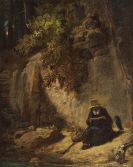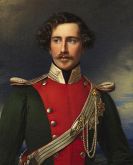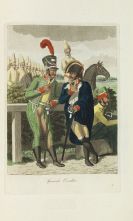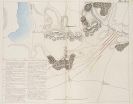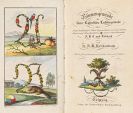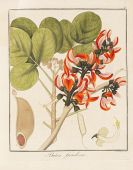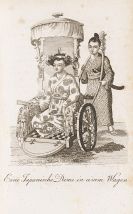
John Constable
East Bergholt
1776 -
London
1837
The painter John Constable was born on June 11, 1776 in East Bergholt, Suffolk. Until 1799 he worked in the shop of his father, Golding Constable, but then entered the Royal Academy in London, where he became a student of Joseph Farington. He was strongly influenced by Jacob van Ruisdael and Claude Lorrain, before he found his own style of painting, based on the immediate observation of nature.
In spite of his studies at the academy, John Constable largely remained self-taught. In 1802 Constable had his first exhibition in London. That same year, he bought a studio in his home town. In 1809 he met his future wife, Maria Bricknell, the daughter of a civil servant. In 1816, one year after his mother's death, Constable married Maria Bricknell, with whom he had 7 children. John Constable was particularly interested in landscape paintings, in which he tried to capture the phenomena and the variability of nature.
Initially, John Constable's paintings only seemed to meet with little interest in England. After he had participated in the Paris Salon, however, they became very successful in France. Constable's picture "The Hay Wain", which was shown at the Paris Salon, for example, influenced Delacroix's palette.
With an animated brush stroke and spatula, John Constable tried to capture the atmosphere of the moment, thereby anticipating the Impressionists' interpretation of nature. In 1824 John Constable even received a gold medal from the French king. Among his most important works are "Malvern Hall" (1809) and "The Cornfield" (1826). Constable's series of watercolors are also very famous.
John Constable is regarded as the most important English landscape painter of the 19th century, at a par with William Turner. On November 23, 1828, Maria died from tuberculosis at the age of 41.
John Constable died unexpectedly in the night of March 31, 1837.
Would you like to sell a work by John Constable?
Infos for seller
